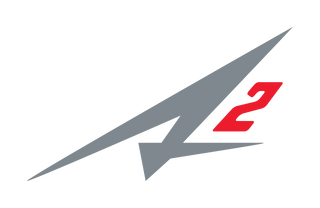"My Race Day Setup" will be a series where we review the race setups for many of our A2 team athletes (pros & amateurs) and review why these athletes made the choices they did.
Name: Megan Tuncer
Professional or Age Grouper: Age grouper
Number of Years Racing: 9 years
Height: 5'4"
A2 Bike Size: Small (I often ride XS in other brands, but my reach is long compared to leg length, so a small worked well for me for A2.)
. . . . . . . . . . . . . . . . . . . . . . . . .
I switched to riding A2 after riding a Liv Avow for many years. I was having a few issues with the cockpit of my Avow being hard to adjust and often requiring me purchasing a lot of new hardware every time I wanted to adjust reach or aerobar angle. The particular frame that I had as well offered few spaces for extra storage and hydration, so while I had gotten good at getting creative with zip ties and pockets, I knew that would be a must when getting a new bike.
I'm very lucky to work at A2, so it was a bit easier to bother Brandon for help when choosing my bike setup (thank you, Brandon!).
Shifting
My first and biggest decision was what kind of shifting I wanted. I opted to go with 12 spd SRAM Rival for a few reasons.- 12 spd: That's really the way the industry is going, and I didn't want to have to replace a bunch of equipment yet again in a year. This did require me to change the cassette/setup on my Wahoo smart trainer, but it was a pretty simple swap.
- SRAM Rival: Switching to wireless electronic shifting was probably the change that I was the most excited for. Not only is electronic shifting easier and far more fun -- I mean, that little noise that the derailleur makes while shifting is pretty sweet -- but I also think it makes for a safer race experience. It's hard to shift when you're descending because it's safer to have your hands on the base bars, and to shift into a harder gear you have to figure out when the least unsafe time is to remove your hand(s). With the option to shift from the base bars, I don't have to do any of that thinking anymore. It's also great when you're climbing, but you're going a lot slower when climbing.
-
SRAM vs Shimano: The great debate! I can only tell you why I chose SRAM, although I received a lot of advice and opinions from many people. Ultimately, I liked the fact that it was wireless, it could be adjusted and checked via an app, and it was easy to charge with removable batteries. I'm not the most tech-savvy, so having something that felt easy was huge for my peace of mind.

Pictured above (photo from SRAM) is the SRAM app, which lets you check batteries, adjust indexing and more -- even when you're without service (which I sometimes am on more backcountry Oregon roads!). Learn more at https://www.sram.com/en/sram/road/collections/etap-axs
Wheels
My wheel choice was a combination of budget, handling confidence, race conditions and need for speed (lol). I know I have fairly good bike handling, so while I had never ridden a wheel this deep in the front before, I knew I could handle it with a bit of practice. I ended up getting the Vision 81 set, but I was extremely lucky and was able to borrow a disc in the back for IRONMAN Coeur d'Alene. I knew my next big race would be Kona, and discs aren't allowed, so I'd rather have a wheelset that I could ride at every race.Storage
Because I only race middle and long distance triathlons, having storage is a MUST. I have the Profile Design BTA FC25 front hydration, XLAB Stealth Pocket for food, and the Bontrager Draft Box in the rear for a flat kit. I don't like to stop at special needs unless I have to, so I try to carry everything I need on me during a long race.Saddle
I swapped out the standard saddle for one of my own just because I'm INCREDIBLY picky. I really only ride COBB because I prefer a firmer saddle that's nice and narrow. I discovered that I actually need a narrow saddle after working with a bike fitter who did a proper saddle fitting, and I've never looked back. Often times it may take some trial and error for you to figure out what works best for you!Brakes
I was SO EXCITED to finally have disc/hydraulic brakes! While I do agree that disc brakes are often less important in triathlon as they are in traditional bike racing, I do enjoy descending fairly aggressively and had quite a few hilly races in 2023. The hydraulic brakes also are simply better in terms of performance and upkeep -- there's really not much that you need to do once it's set up. Just bring it into your local shop during your offseason/preseason tune ups and include it as part of the once-over.This was really another peace of mind thing, and there have been a few times that I've been happy for the brakes!
The Important Part
Unfortunately the only thing I DON'T have for this bike yet is...a name. If you're not into the whole "naming your bike" thing, feel free to scroll past. But this bike deserves a good name. Anyone have any ideas? Want to send me your bike's name for inspiration?Send it my way at @a2.bikes on Instagram!


